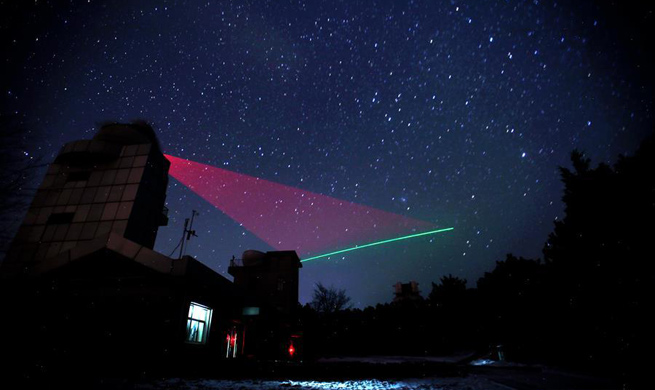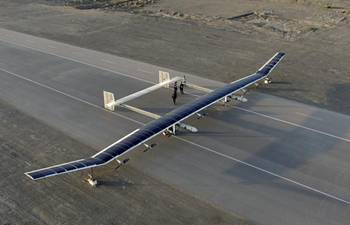SAN FRANCISCO, June 16 (Xinhua) -- Researchers with Stanford University have developed a way to wirelessly deliver electricity to moving objects, which could one day charge electric vehicles and personal devices like medical implants and cell phones.
If electric cars could recharge while driving down a highway, it would eliminate concerns about their range and lower their cost.
A paper, published this week in the journal Nature, addresses the technology hurdle by introducing the way that electricity is transmitted wirelessly to a moving light-emitting diode (LED) lightbulb over a distance of a few feet. The demonstration involved a 1-milliwatt charge, whereas electric cars often require tens of kilowatts to operate.
It was built on technology developed in 2007 at Massachusetts Institute of Technology (MIT) for transmitting electricity wirelessly to a stationary object.
"In addition to advancing the wireless charging of vehicles and personal devices like cellphones, our new technology may untether robotics in manufacturing, which also are on the move," said Shanhui Fan, a Stanford professor of electrical engineering and senior author of the study. "We still need to significantly increase the amount of electricity being transferred to charge electric cars, but we may not need to push the distance too much more."
A major drawback of plug-in electric cars currently on the market is their limited driving range. Electric vehicle batteries generally take several hours to fully recharge.
Mid-range wireless power transfer, as developed at Stanford and other research universities, is based on magnetic resonance coupling. Just as power plants generate alternating currents by rotating coils of wire between magnets, electricity moving through wires creates an oscillating magnetic field.
This field also causes electrons in a nearby coil of wires to oscillate, thereby transferring power wirelessly. The transfer efficiency is further enhanced if both coils are tuned to the same magnetic resonance frequency and are positioned at the correct angle.
However, the continuous flow of electricity can only be maintained if some aspects of the circuits, such as the frequency, are manually tuned as the object moves. So, either the energy transmitting coil and receiver coil must remain nearly stationary, or the device must be tuned automatically and continuously.
To address the challenge of this significantly complex process, the Stanford team eliminated the radio-frequency source in the transmitter and replaced it with a commercially available voltage amplifier and feedback resistor.
The system automatically figures out the right frequency for different distances without the need for human interference.
"Adding the amplifier allows power to be very efficiently transferred across most of the three-foot range and despite the changing orientation of the receiving coil," graduate student Sid Assawaworrarit, the study's lead author, was quoted as saying in a news release. "This eliminates the need for automatic and continuous tuning of any aspect of the circuits."
To test the approach, an LED bulb was placed on the receiving coil. While LED brightness would diminish with distance in a conventional setup without active tuning, the brightness remained constant in the new setup as the receiver moved away from the source by a distance of about three feet, or about 1 meter.
Noting that they used an off-the-shelf, general-purpose amplifier with a relatively low efficiency of about 10 percent in the research, the researchers said custom-made amplifiers could improve that efficiency to more than 90 percent.

















